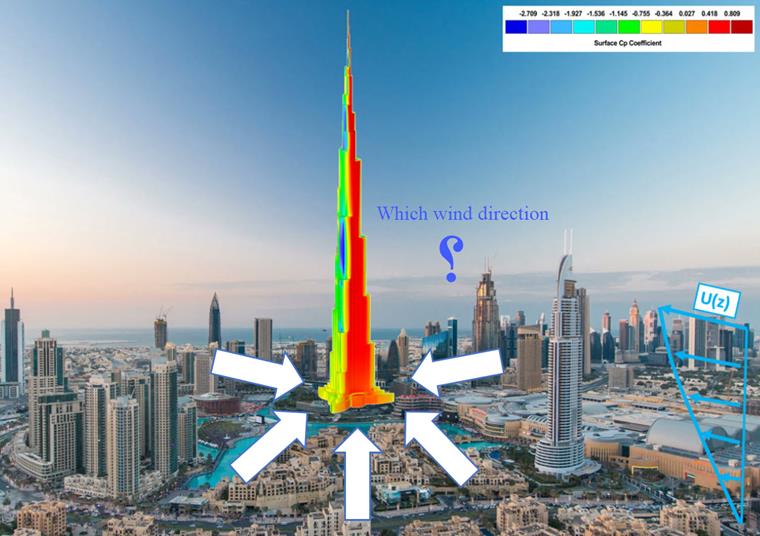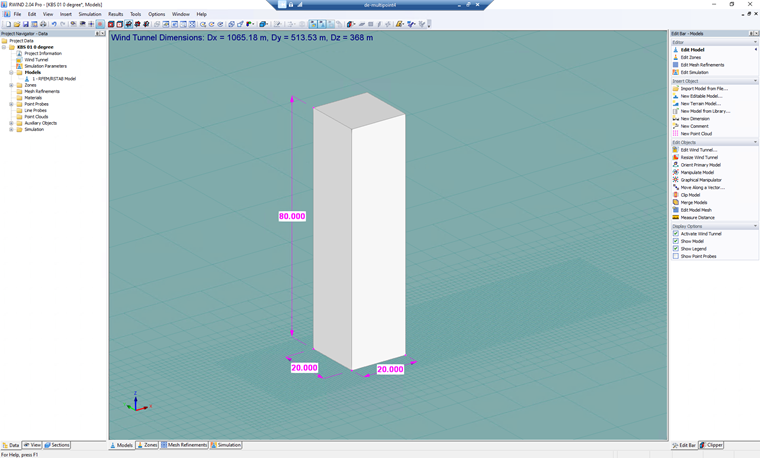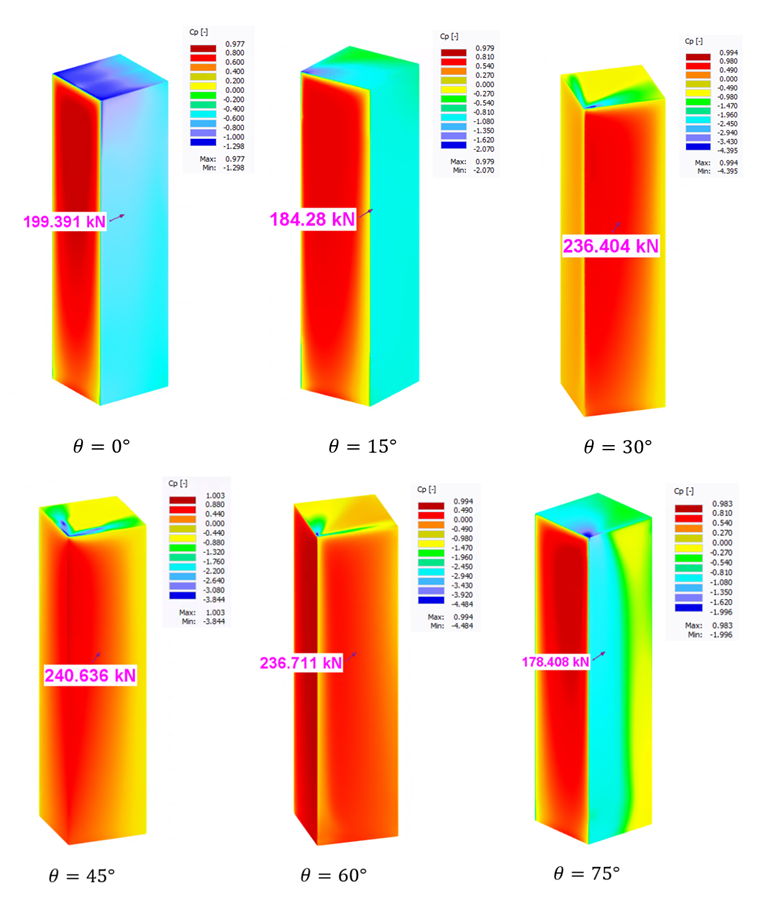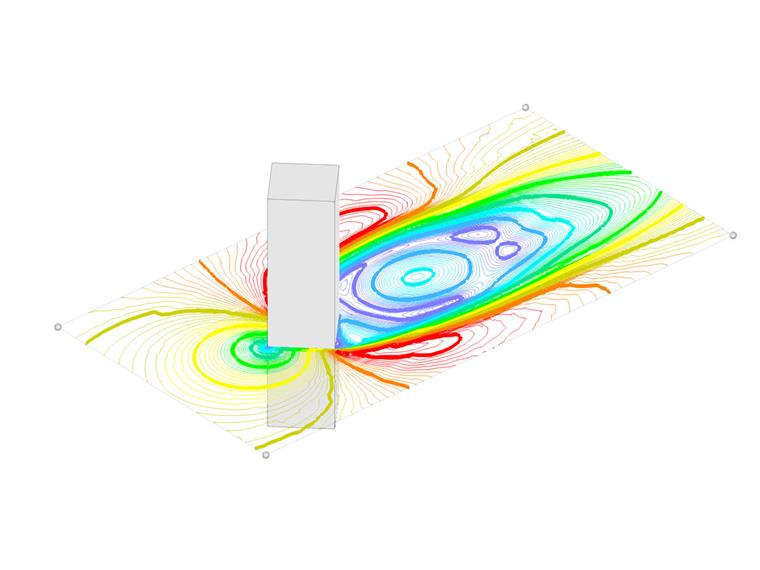Understanding the impact of wind direction is essential for developing designs that can withstand varying wind forces, ensuring the safety and durability of structures. Simplified, the wind direction helps in fine-tuning CFD simulations and guiding structural design principles for optimal performance and resilience against wind-induced effects.
Introduction
Wind direction plays a crucial role in computational fluid dynamics (CFD) simulations and the structural design of buildings, bridges, vehicles, and other objects subjected to aerodynamic forces. When engineers and designers work on the development of a structure, understanding the influence of wind direction is essential to ensure stability, safety, and performance (Image 1).
In CFD simulations, wind direction determines how air flows around a structure, affecting pressure distribution, drag, lift, and other aerodynamic forces. These simulations allow designers to predict how changes in wind direction can lead to varying responses in the structure, influencing its design to withstand different wind conditions. For example, a building’s shape may be optimized to minimize wind loads in common wind conditions or a bridge might be designed to avoid resonance with prevailing winds.
From the perspective of structural design, the effect of wind direction is a vital factor in determining the load paths and the strength requirements of different structural elements. Structures are often designed to be robust in the face of the most severe wind loads expected during their lifetimes. This involves understanding prevailing wind patterns, including direction, speed, and frequency, to inform the orientation, shape, and structural reinforcement.
Moreover, wind direction can affect the ventilation, energy efficiency, and even the comfort levels inside buildings, influencing the architectural aspects of structural design. In some cases, it can also impact soil erosion around the structure, affecting its foundation and stability. Here are some key effects of wind direction on wind simulation:
CFD Simulations
- Aerodynamic Analysis: CFD simulations allow for the analysis of airflow around structures. Changing wind directions will affect the pressure distribution around a building or structure.
- Turbulence Modeling: Different wind directions can cause varying turbulence effects, which can be studied and modeled using CFD.
- Wake Region: The wake region, which is an area of disturbed flow downstream of the structure, can be highly sensitive to wind direction. This has implications for structures situated downstream or for designing clusters of buildings where the airflow between structures is a consideration.
- Ventilation and Air Quality: Wind direction influences natural ventilation and pollution dispersion around buildings, and CFD can help in analyzing these effects.
- Validation and Calibration: For CFD simulations to be effective, they need to be validated and calibrated with real-world measurements. Understanding the prevailing wind directions is crucial for this process.
Structural Design
- Load Calculation: Wind direction affects the wind load on structures. Engineers need to consider the worst-case scenarios, involving various wind directions, to ensure that structures can withstand the highest possible loads.
- Dynamic Response: Structures respond differently to wind loads coming from various directions, affecting their dynamic response. Understanding these responses is crucial for designing stable structures.
- Vortex Shedding: Depending on the wind direction, vortex shedding can occur, causing oscillations in structures, especially slender ones like chimneys and towers.
- Aeroelastic Phenomena: In structures like bridges, wind direction can lead to aeroelastic phenomena such as flutter, which can be catastrophic if not mitigated during design.
Interplay between Wind Direction, CFD, and Structural Design
- Interdisciplinary Approach: Architects, structural engineers, and CFD analysts often collaborate, using CFD results to inform structural design decisions.
- Design Optimization: CFD simulations can help in optimizing the shape and orientation of buildings to minimize wind loads and enhance aerodynamic performance.
- Facade Design: Information on wind direction and pressure distribution is used to design facades that can withstand various wind loads.
- Pedestrian Comfort: The studies also ensure that wind conditions at ground level remain comfortable and safe for pedestrians.
Case Study
For example, a simple building shape (Image 2) is chosen to evaluate the effect of wind direction on it. The values of Fd,Fx,Fy,Fz are related to total drag forces, x-direction force, y direction force, and z direction force, also Cp,max,pos and Cp,min,neg are related to maximum positive wind pressure and minimum wind pressure (Image 3 and Table 1).
| Wind Directions(θ) | Fd (kN) | Fx (kN) | Fy (kN) | Fz (kN) | Cp,max,pos | Cp,min,neg |
| θ=0 | 199.39 | 195.12 | -14.43 | 38.40 | 0.97 | -1.29 |
| θ=15 | 184.28 | 180.34 | 10.88 | 36.30 | 0.97 | -2.07 |
| θ=30 | 236.40 | 230.56 | -33.69 | 39.91 | 0.99 | -4.39 |
| θ=45 | 240.63 | 237.00 | 0.912 | 41.63 | 1.00 | -3.84 |
| θ=60 | 236.71 | 230.62 | 35.72 | 39.62 | 0.99 | -4.48 |
| θ=75 | 178.40 | 172.40 | -28.80 | 35.74 | 0.98 | -1.99 |
Conclusion
Wind direction is a vital component in the analysis and design of structures. Through CFD simulations, engineers can predict and mitigate the impact of wind, tailoring their designs to stand resilient against the unstable nature of wind patterns. As we push the boundaries of architecture and engineering, the harmonization of structure with wind direction through advanced simulation becomes a testament to our growing mastery over the forces that shape our built environment. In the current case study, we demonstrated that the angle of 45 is the most critical scenario related to drag forces.
The impact of wind direction is not just limited to external pressures; it also affects aerodynamic behavior, including potential vortex shedding and wake regions, which can induce oscillatory loads. These dynamic effects must be thoroughly understood to ensure the structural integrity and serviceability of buildings, bridges, and other infrastructures. Therefore, by incorporating the variability of wind direction into CFD simulations, engineers can predict the possible scenarios a structure may encounter over its lifespan. This leads to more robust and efficient designs that can withstand the capricious nature of the wind, ensuring safety, performance, and longevity.



